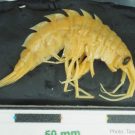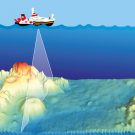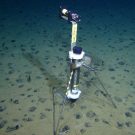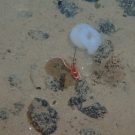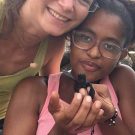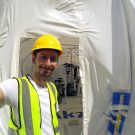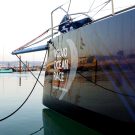by Tasnim Patel, RBINS Life in the deep-sea is no picnic and dedicating your life to studying our last truly unexplored wilderness isn’t easy either. To sample fauna in the abyssal plains requires courage, expertise, commitment, financial backing and in my case …a pinch of luck. I’m studying deep-sea scavenging crustaceans, which are not only […]
STARTING IT OFF IN THE LAND-DOWN-UNDER
Greetings! Team Tassie here dropping in to say “Good day!” We’d first like to introduce ourselves – our names are Maria and Vincent. Maria is a German student currently enrolled at the University of Kiel, doing her Master’s degree in Environmental Management. She has previously completed a Bachelor’s degree in Environmental Sciences at the University […]
Mapping the seafloor/Die Kartierung des Meeresbodens
(Deutsche Version unten) How do you plan research that is to be conducted at the seafloor in 4000 meter water depth? How do you choose the locations for your studies in a large area that you may not know much about yet? How do you pick the best spot to deploy sensors? – Which path […]
BOBO and the 7 (+7) dwarfs: How to sense the deep sea
by Sabine Haalboom (NIOZ) The first half of the cruise has passed and we’ve finished the baseline studies in the Belgian license area. Doing my PhD research in marine geology at the Royal Netherlands Institute for Sea Research (NIOZ), my main interest is the particle dynamics in the bottom boundary layer (i.e. the layer close […]
SO268: What’s up on the seabed?
At the bottom of the Ocean, in ~4000m water depth they can be found in high abundances: Manganese nodules. Industry and states are interested in these potato-sized objects as a new metal resource. But before commercial mining will start, the potential ecological impacts need to be investigated. Therefore, the project MiningImpact (funded through JPI Oceans) […]
Olá, daqui fala Anne e Mayara, Team Cabo Verde.
Here is a latecoming blog from GAME 2018. We have been the first GAME students to conduct experiments at the Ocean Science Centre Mindelo (OSCM) on the island of São Vicente that belongs to the archipelago of Cabo Verde. It was exciting for us to explore a new GAME site but also exhausting and laborious. […]
Second Yacht equipped in Auckland
Great News at the Ocean Summit in Hong Kong as the second Team (AkzoNobel) will jump into the Oceans with our Equipment from Leg 7 onwards next to Turn the Tide on Plastic. My talk did cost me my lunch that day as there were so many interested people in our research activities and possible […]
Leg3 Cape Town to Melbourne and the Southern Ocean
The first preliminary results were presented by Dr. Toste Tanhuas Talk on the Ocean Summit in Cape Town got some audience, which listened. The system itself was full functional with minor maintenance needed. Some minor things as a loose screw and precautionary exchange of a small pump after more than roughly 9150 nautical miles were […]
10°51.600’S 78°24.130’W
After a long and exhausting flight from Europe, we arrived in Lima, Peru, on the 30th of May. Down here we were facing the typical Peruvian winter weather. It was cloudy and rainy and felt almost like Kiel in summer. The next day we went straight to the port of Callao, a place where many […]
